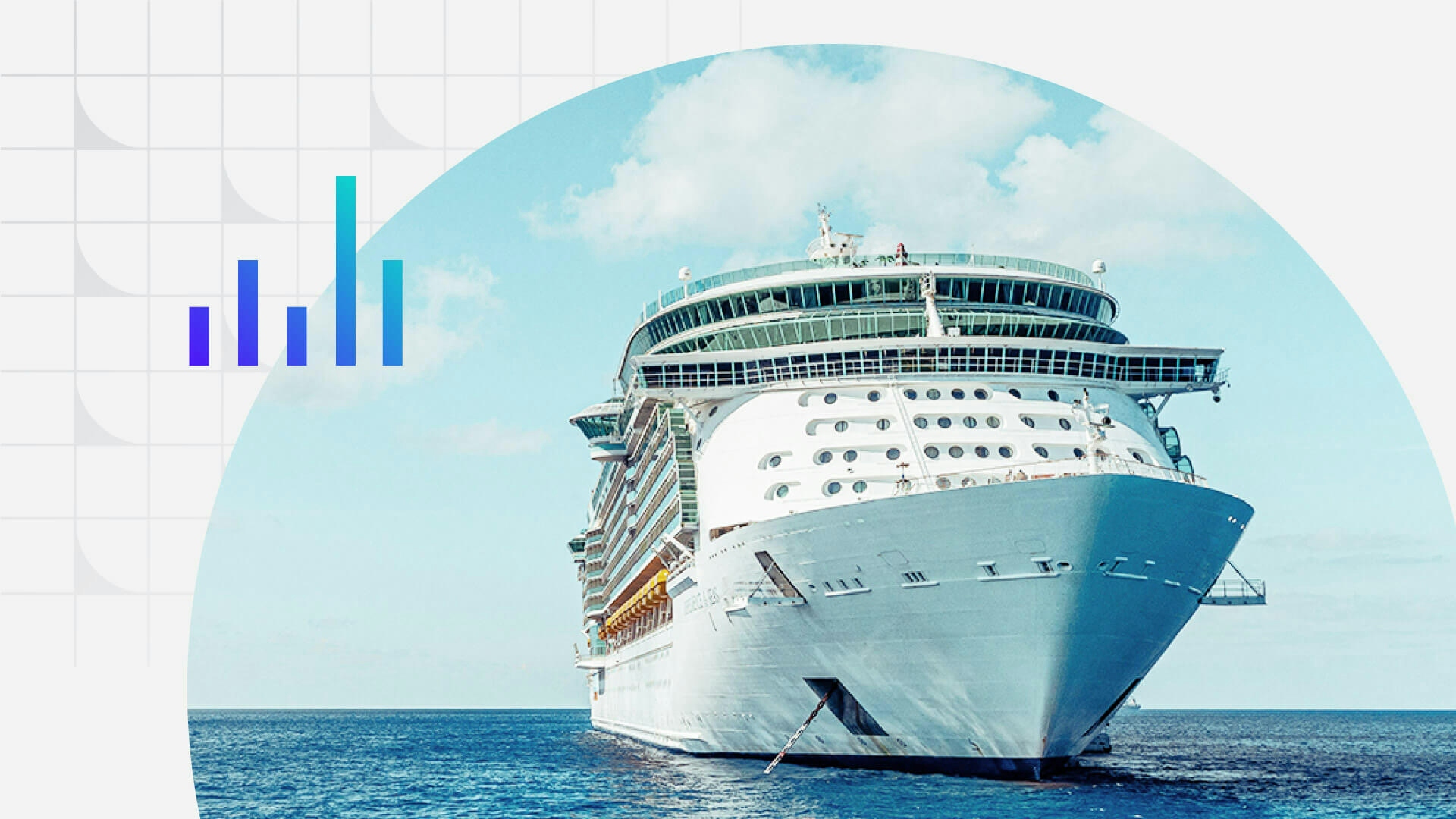Younger Consumers’ Cruise Plans Are Full Steam Ahead

Key Takeaways
Cruisers today skew young — 37% are millennials and 24% are Gen Z adults, while these groups make up 28% and 16% of the total population.
Net favorability for major cruise lines has increased more than 10 points since the end of 2021.
Cruisers are more likely to seek connection and status than adults in general, and are more likely to trade up if they feel the spend is worth it.
The cruise industry has been riding a wave of resurgence in the years since the pandemic, charting a steady course back to pre-2020 popularity. With an ever-expanding demographic of travelers from first-timers to seasoned voyagers, cruise lines are enjoying growing consideration from vacationers seeking everything from convenience to relaxation to adventure. As passenger numbers swell, the industry’s latest challenge is navigating how to better serve its diverse customer base.
Young travelers and parents are key customers for cruise lines
We’ve written before about how cruise lines would need to attract younger customers in order to stay afloat, and they seem to have done just that in the years since the COVID-19 pandemic upended the industry. In October of 2024, 30% of millennials with plans to travel in the next year said their trip would “definitely” or “probably” include a cruise, and 21% of Gen Zers said the same. A demographic breakdown of consumers who said they’ve taken a cruise with either Royal Caribbean or Carnival — the two main cruise lines in the U.S. — reinforces this, according to Morning Consult Intelligence data.
Gen Z adults and millennials who have used popular cruise lines overindex compared to the general population by 8 and 9 points, respectively. Firmly in contrast to the stereotype that cruises only attract baby boomers and retirees, this shows that ocean liners are successfully capturing the younger demographic. What’s more, cruisers are introducing the next generation to the high seas — members of this cohort are far more likely to be parents than the general population.
Cruisers are more likely to be young, male, and parents

Some other demographic nuances align with those of travelers in general. Cruisers are higher-earning and more educated than the general population, and more likely to live in urban areas. But all of these groups are also just more likely to travel than adults as a whole, so the differences can be attributed to that rather than a particular proclivity of urbanites to cruise, for example.
But one split worth noting is the gender difference. The share of men who have gone on a major cruise line is 19 percentage points higher than the share of women, compared with the near 50/50 split of the population as a whole. Men are slightly more likely than women to travel for leisure in general, but the divide is not as stark, suggesting that cruise lines are doing an effective job of reaching male passengers — or, perhaps, a less effective job of reaching female ones.
Favorability is on the rise, but unsteady for key cruise audiences
As passenger volume for cruises has risen, so has favorability for major cruise brands. This suggests that, in general, cruisers are having positive experiences on their travels which are impacting their own perceptions directly, or the perceptions of others via word of mouth. For U.S. adults generally, the 3-month rolling average of net favorability (the share of those with positive views of major cruise lines minus the share with negative views) has increased more than 10 points since the end of 2021.
Cruise lines have made notable gains in favorability since the pandemic

While favorability is up for all generations individually, the net for both millennials and Gen Z adults shows much more variability than for Gen Xers and baby boomers. Favorability for the younger generations took a tumble in the summer months of 2022, then climbed again before dipping slightly in late summer 2024. The timing of hurricane season in the Caribbean, a popular hotspot for cruising, could have contributed to that. Though cruise lines are always exceptionally cautious during hurricane season, the occasional viral video of a ship rocking in a storm or deck chairs being blown about can certainly give a prospective cruiser pause, and these younger consumers are more likely to be spending tim on social media where videos of that sort gain traction.
No matter the reason, all of this indicates that older travelers’ perceptions of cruise lines are much more cemented, while the views of younger travelers are still more malleable. This could be good news or bad news for brands in the space — on the positive side, they still have time to shape their relationships with these key consumer groups. But on the other hand, one bad experience with a cruise line could cause a younger traveler to switch brands, or to abandon cruising altogether in favor of other travel opportunities.
Cruisers value connection, community and quality
Cruise brands hoping to create and reinforce lasting positive relationships with young travelers must understand the ways their values and expectations differ from others. These unique traits can shape everything from products to services to customer engagement.
Connection and community are uniquely important to cruisers

There are a few key themes in the traits that most differentiate cruisers from the general population. The first is a desire to connect — they are more likely than others to consider themselves sociable and want to be involved in a community or group. Cruises are certainly a good place for more social consumers, but liners continuing to facilitate events and opportunities to connect on board will further elevate their experience. Notably, this cohort also aims to achieve social status, which can be woven through social and group activities onboard.
The second is a willingness to trade up. While this may be related to the higher income skew of this group, what’s clear is that they are willing to spend more for various reasons — for convenience, quality and environmental friendliness. These areas are ripe for cruise lines to enhance (particularly sustainability given younger consumers’ concerns in this area), and clearly communicating the benefits in these areas will more likely facilitate an upsell.
Finally, this group is tech and trend-savvy. They will look for the brands they engage with to be cutting edge, especially when it comes to technology. And while cruise brands are certainly making strides in this area, this consumer characteristic reinforces the need to invest further.
Sign up to get the latest global brand, media and marketing news and analysis delivered to your inbox every morning.
Lindsey Roeschke is an analyst whose work focuses on behavior and expectations of consumers in the travel & hospitality and food & beverage categories, particularly through a generational and cultural lens. Prior to joining Morning Consult, she served as a director of consumer and culture analysis at Gartner. In addition to her research and advisory background, Lindsey has more than a decade of experience in the advertising world. She has lived and worked in seven cities across four continents.


